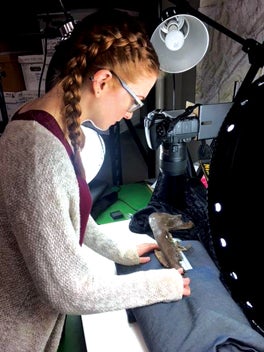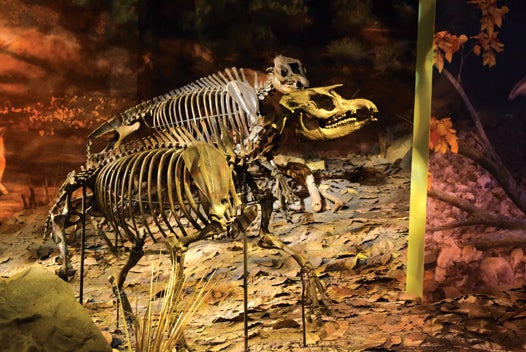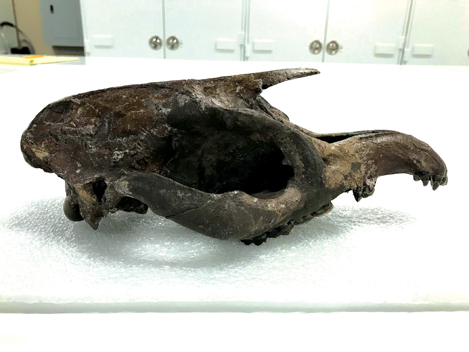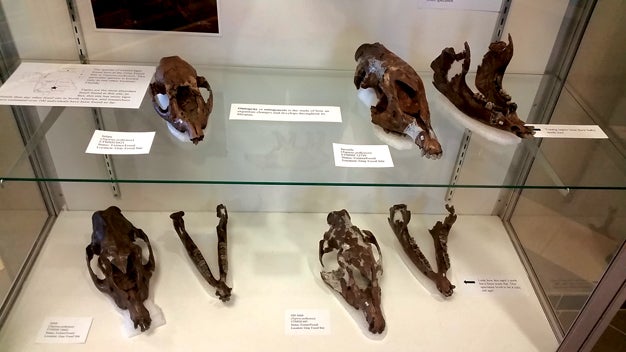Straight from the tapir’s mouth… Life and survival in ancient Gray
Published 12:50 pm Thursday, June 4, 2020
|
Getting your Trinity Audio player ready...
|
CONTRIBUTED BY ETSU
JOHNSON CITY – The Gray Fossil Site of East Tennessee preserves the remains of mastodons, rhinos, rodents, trees and many more organisms that made their homes in this part of the world between 4.5 and 4.9 million years ago. But was this a safe and stable habitat or a dangerous place of mass mortality?
A new study published in the journal Palaeontologia Electronica suggests the former is more likely.
To answer this question, researchers turned to tapirs. These are large herbivorous mammals whose living species are found in the tropics of the Americas and Asia.
There are several dozen well-preserved fossil tapirs at the Gray Fossil Site, more than at any other fossil site in the world. And inside their skulls are numerous little time capsules that preserve unique evidence of these animals’ lifestyles: their teeth.
“I decided to look at tapir teeth simply because we have such an abundance of them,” says lead author Julia Schap, an alumna of East Tennessee State University’s paleontology master’s program and currently a Ph.D. student at Georgia Tech.
“Having a sample size this big is the perfect opportunity for large-scale community analysis, which is often hard to come by with fossils.” This study analyzed teeth in the lower jaws of 38 fossil tapirs.
Just like humans, tapirs gain teeth as they grow, with new teeth erupting at different stages of their lives.
Careful comparison with tooth development of living tapirs allowed the researchers to estimate that the fossilized tapirs examined in this study ranged from newborns all the way up to 11-year-olds, which is elderly for a tapir.
As the animals ate throughout their lives, the shapes of their teeth changed. Tooth-on-tooth and tooth-on-food contact damaged and wore down the teeth in recognizable patterns.
By matching these wear patterns to tooth eruption patterns, the researchers were able to assess how these tapirs’ diets compared between their first years and their last.
For this study, the team developed a new method for quantifying that tooth wear, measuring the angles that formed and fluctuated on the biting surfaces of the teeth. “This allowed for a more exact change in wear to be seen within and between the eruption series,” Schap said.
They identified a gradual and consistent pattern of wear throughout the tapirs’ lives, which not only supports the idea that they were browsing on soft vegetation – which has been inferred by previous studies – but also that they were able to enjoy that menu their entire lives.
These tapirs were often living to ripe old ages on a regular, consistent diet of tasty greens.
“These results point to the site as having been a stable environment with little seasonal stress,” says Dr. Joshua Samuels, assistant professor in the Department of Geosciences at ETSU and curator at the Museum of Natural History at the Gray Fossil Site.
“It also supports the findings of prior studies which suggested the tapirs preserved at the site built up over time through attrition, rather than in a mass mortality event.”
That is to say that the Gray Fossil Site wasn’t a place where tapirs came to die; it was a place they could live their whole lives.
As more fossils are uncovered and techniques like these are developed, there will be much more to learn about the communities that thrived in East Tennessee nearly five million years ago.









